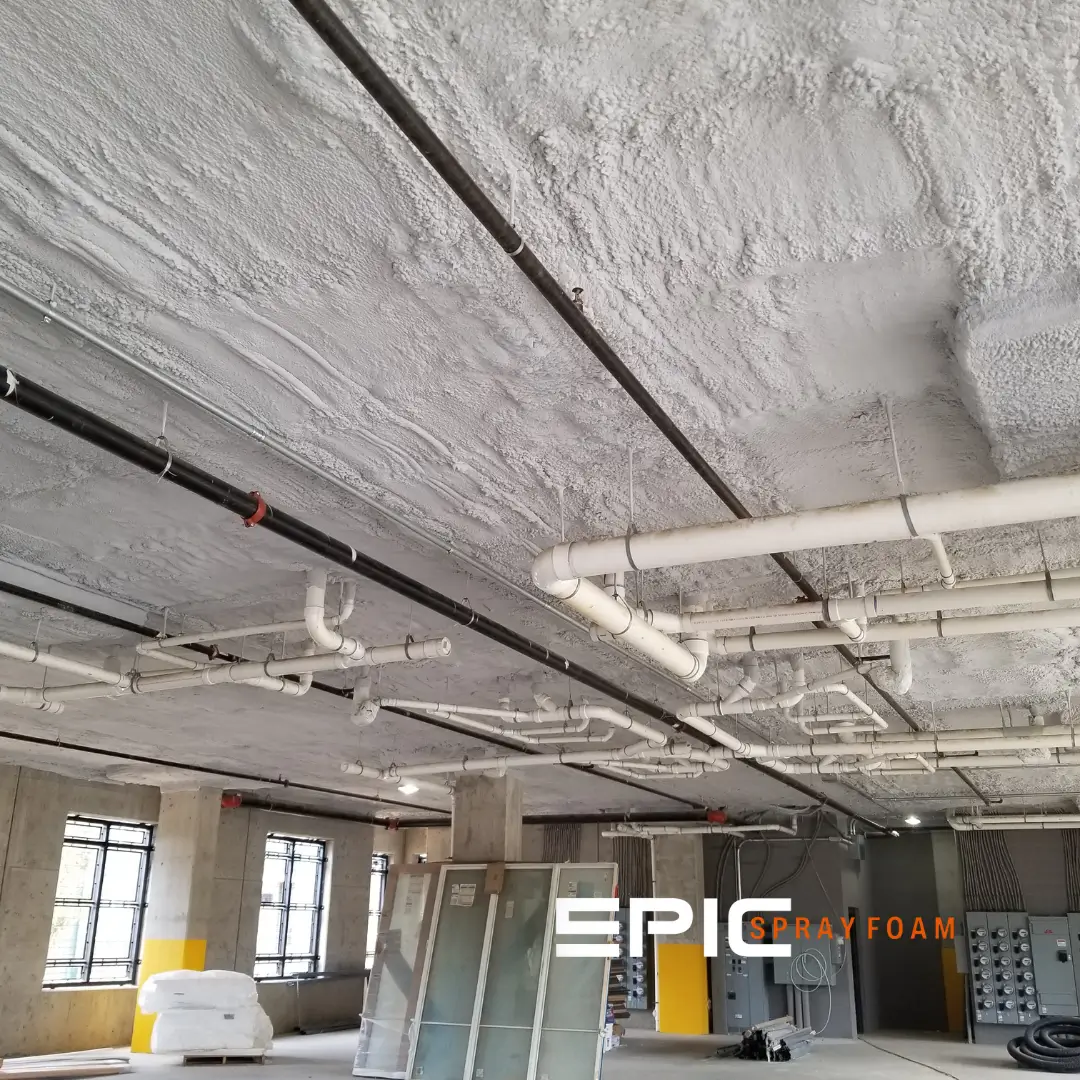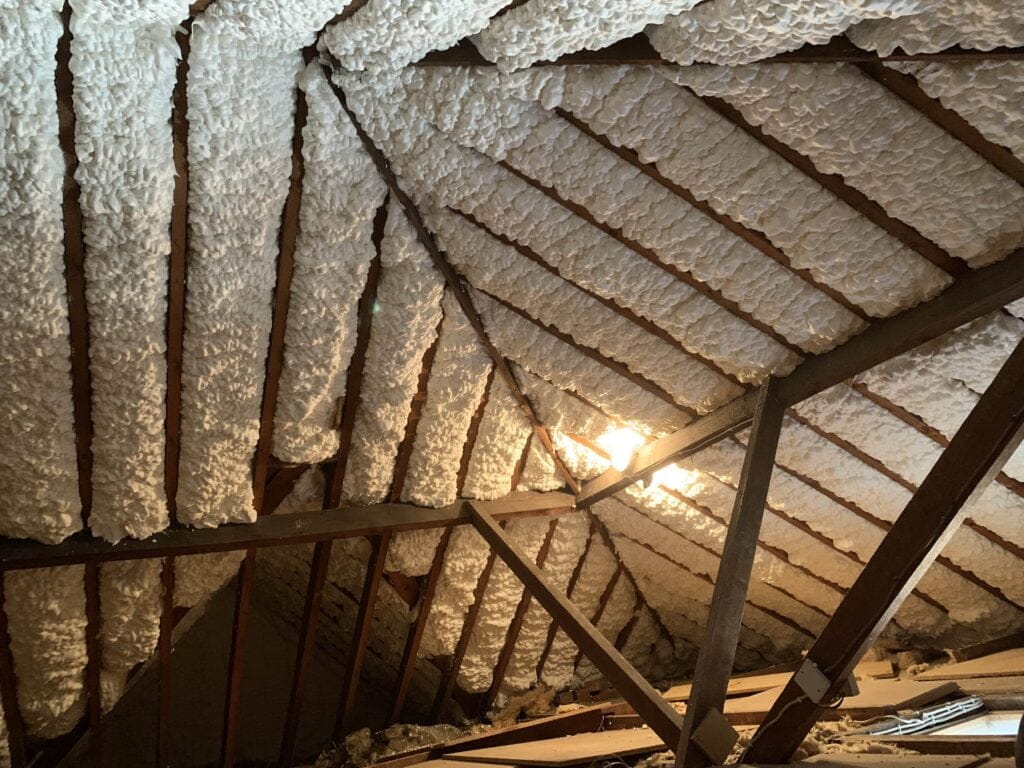Top Applications of Spray Foam for Residential and Commercial Properties
Top Applications of Spray Foam for Residential and Commercial Properties
Blog Article
Spray Foam: The Ultimate Solution for Air Sealing and Insulation
Spray foam insulation has emerged as a leading solution for effective air securing and thermal insulation, supplying a special mix of residential properties that establish it apart from typical techniques. Comprehending the full scope of its advantages, setup processes, and contrasts with various other insulation types is essential for making informed choices.
What Is Spray Foam?
Spray foam is a flexible insulation material that incorporates the concepts of air sealing and thermal resistance to boost power efficiency in structures. Made up mainly of polyurethane or various other comparable compounds, spray foam is used as a liquid that increases upon call with surfaces, developing a solid, continual layer of insulation. This special residential property enables it to load spaces, cracks, and spaces that conventional insulation products may forget, offering a superior air seal.
There are 2 main kinds of spray foam: open-cell and closed-cell. Open-cell spray foam is lighter and more adaptable, providing superb sound absorption and a reduced R-value per inch - Spray Foam. On the other hand, closed-cell spray foam is denser, supplying a higher R-value, wetness resistance, and included structural honesty to building elements
The application procedure usually entails specialized tools, ensuring a smooth application that complies with various substrates, consisting of timber, concrete, and steel. This adaptability makes spray foam appropriate for both brand-new constructions and retrofitting existing structures. Its capability to develop an airtight barrier substantially adds to decreasing energy intake and boosting indoor air quality, consequently making it a recommended option amongst house owners and building contractors alike.
Benefits of Spray Foam Insulation
One of the most considerable advantages of spray foam insulation is its phenomenal ability to create a continuous air barrier, which effectively reduces energy loss. Unlike conventional insulation materials, spray foam broadens to fill up spaces and fractures, guaranteeing that air leakage is dramatically minimized. This particular not only improves energy efficiency but additionally brings about decrease energy expenses in time.
Additionally, spray foam insulation provides superior thermal resistance, adding to an extra steady indoor environment. Its high R-value per inch permits for reliable insulation in restricted areas, making it perfect for attics, wall surfaces, and crawl areas. The moisture-resistant buildings of spray foam assistance avoid mold and mildew and mildew growth, advertising healthier living problems.
One more crucial advantage of spray foam insulation is its sound-dampening high qualities (Spray Foam). It effectively minimizes noise transmission in between rooms, developing a quieter and much more comfy home atmosphere. The resilience of spray foam additionally sticks out, as it does not droop or clear up over time, preserving its efficiency throughout its life expectancy
Just How Spray Foam Works
Recognizing how spray foam insulation functions is essential for valuing its performance in air sealing and thermal resistance. Spray foam insulation is composed of two main parts: isocyanate and polyol resin. When these elements are combined, they undergo a chain reaction that creates the material to broaden swiftly, creating a thick foam that loads dental caries, voids, and cracks.
As the foam expands, it complies with surfaces, developing an impermeable seal that significantly decreases air seepage. This particular makes spray foam insulation very reliable at preventing drafts and moisture penetration, which can cause power loss and damage over time. Additionally, the closed-cell variant of spray foam provides remarkable thermal resistance as a result of its inflexible structure, successfully minimizing heat transfer.
The distinct buildings of spray foam allow it to adapt uneven surfaces, ensuring comprehensive coverage and a smooth barrier. Because of this, spray foam insulation not only enhances energy efficiency but additionally adds to boosted interior air high quality by minimizing the build-up of toxins and irritants. Eventually, comprehending the mechanics behind spray foam underscores its duty as a premium option for insulation and air sealing in both residential and business applications.
Setup Process Introduction

Before installment, the space should be appropriately cleaned and prepped, making sure that surface areas are without moisture, particles, and dirt. This step is essential since impurities can endanger adhesion and overall performance. Once the area is prepared, the application you could try this out involves mixing both components of the spray foam, which expands upon get in touch with and fills up spaces successfully.
Educated experts should carry out the setup, using specific devices to make sure uniform protection and ideal density. Safety precautions, consisting of putting on safety equipment and ensuring correct air flow, are imperative throughout this procedure. After application, the foam normally remedies swiftly, developing a solid obstacle that improves energy efficiency.
Contrasting Spray Foam to Typical Insulation
When reviewing insulation choices, spray foam insulation stands apart in comparison to typical products such as fiberglass and cellulose. One of the primary benefits of spray foam is its exceptional air sealing capacities. Unlike fiberglass and cellulose, which can enable air infiltration, spray foam increases upon application, filling up gaps and holes to develop a closed seal. This results in boosted energy performance, as much less heated or cooled down air leaves the home, leading to reduced utility costs.
Furthermore, spray foam provides a greater R-value per inch than traditional insulation types, offering more reliable thermal resistance in a thinner profile. This particular is particularly helpful precede with minimal cavity deepness. Spray foam is immune to moisture and mold development, which can be a substantial issue with cellulose and fiberglass, especially in humid atmospheres.
Nonetheless, spray foam insulation generally brings a greater upfront cost than its go now standard counterparts. House owners must weigh this preliminary financial investment against long-lasting power savings and efficiency advantages. Ultimately, while both insulation kinds serve their purpose, spray foam arises as an advanced solution for contemporary insulation demands, particularly in terms of air sealing and thermal effectiveness.

Conclusion
In summary, spray foam insulation stands for a very reliable remedy for attaining optimum air securing and thermal resistance. Its special buildings, including wetness resistance and noise dampening, make it suitable for various applications in both brand-new building and constructions and retrofitting jobs (Spray Foam). Although the preliminary expenses may be greater contrasted to conventional insulation materials, the long-lasting advantages, such as significant power cost savings and boosted Spray Foam indoor air high quality, warrant the investment and emphasize its worth in modern structure practices.
Spray foam insulation has arised as a leading service for reliable air sealing and thermal insulation, offering a special combination of properties that establish it apart from traditional techniques.Spray foam is a versatile insulation product that combines the principles of air securing and thermal resistance to enhance power efficiency in buildings.When evaluating insulation choices, spray foam insulation stands out in contrast to traditional products such as fiberglass and cellulose. Inevitably, while both insulation types offer their objective, spray foam emerges as a much more advanced service for modern-day insulation needs, especially in terms of air securing and thermal efficiency.
In summary, spray foam insulation stands for a very effective service for attaining optimum air sealing and thermal resistance.
Report this page